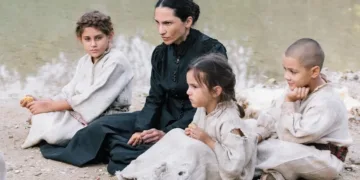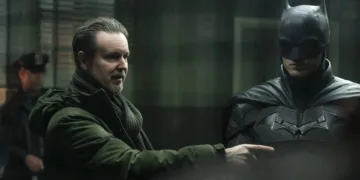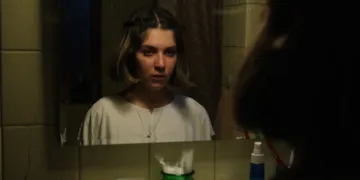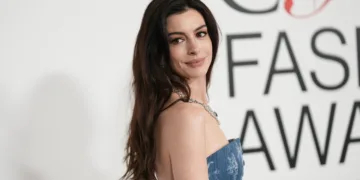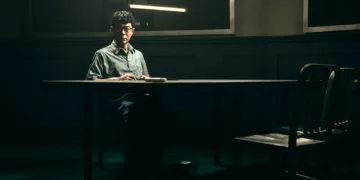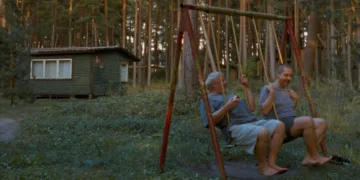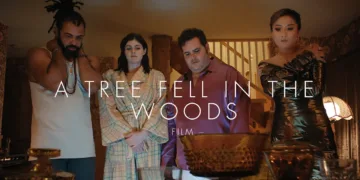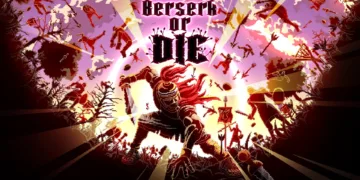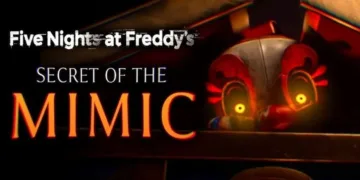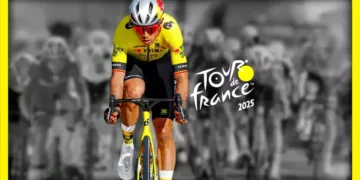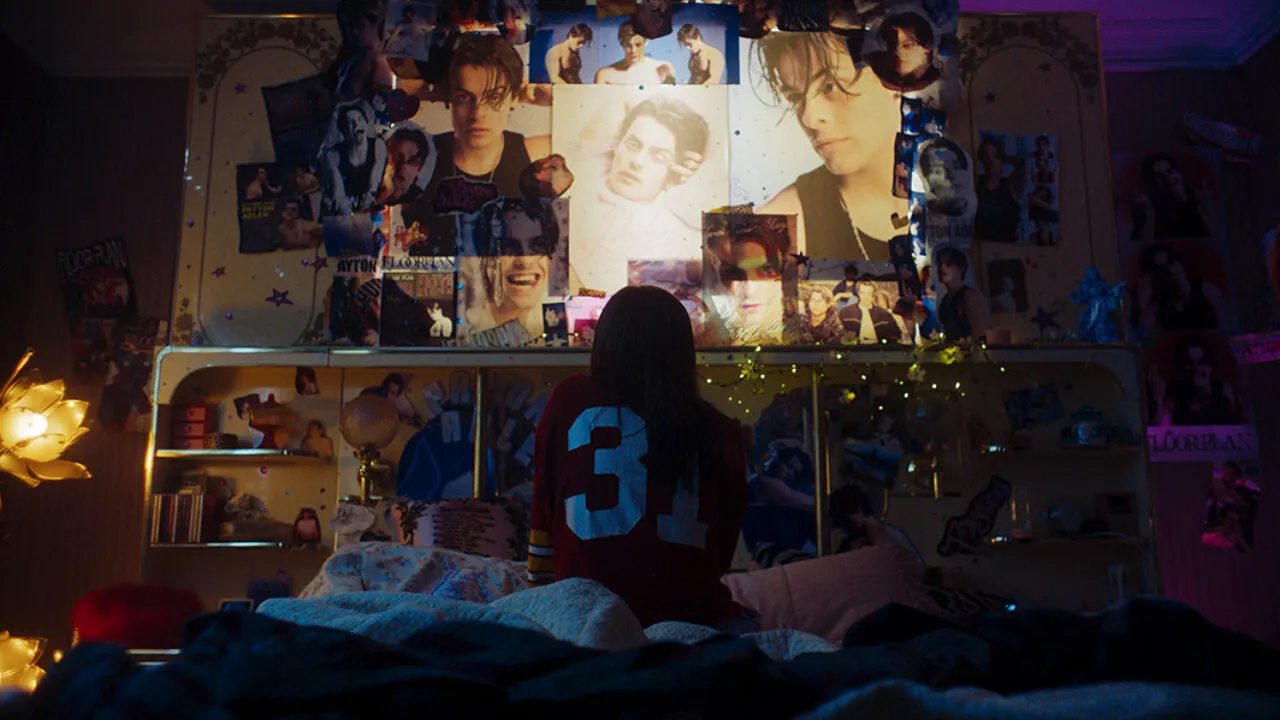A single shattered guitar string can echo a lifetime of longing—and in Sweetness, it snaps at the precise moment teenage grief collides with celebrity obsession. Sixteen-year-old Rylee (Kate Hallett) inhabits a world of muted hallways and classroom cruelty, her solace found only in the soaring choruses of Payton Adler (Herman Tømmeraas) and his band, Floorplan. When a chance collision outside a sold-out concert leaves Payton vulnerable in her care, Rylee’s quiet desperation sparks into a lockdown thriller: she handcuffs her idol in the basement of her suburban home.
Stylistically, the film marries the claustrophobia of Bollywood’s dark thrillers—think Kahaani’s winding alleys—with the restrained realism of Indian parallel cinema, using long takes to let emotions simmer. Yet its narrative pulse owes as much to Nordic chill as to Hindi melodrama, reflecting Gen Z’s global mash-up of influences.
From Rylee’s bedroom shrine—walls plastered with posters and TikTok tutorials—to the stark corridors of her high school, Sweetness establishes a mood that oscillates between adolescent fantasia and psychological dread. Here, the hostage scenario becomes a cultural lens, revealing how universal longing can mutate into something dangerously intimate.
From Shrine to Cell: Plot & Structure
Act I opens on Rylee’s fractured family life: a mother lost too soon, a father (Justin Chatwin) more invested in duty than in his daughter, and a lone confidante, Sidney (Aya Furukawa). Her evenings are rituals of devotion—listening to Payton’s lyrics as if they hold the key to redemption. This setup recalls the slow-build intimacy of Satyajit Ray’s character studies, where interior spaces speak volumes.
The inciting incident arrives in a surge of sound design: the concert’s amplified vocals isolate Rylee’s perspective, then snap to the screech of tires as Payton crashes into her world. Instead of calling for help, she drags him home, planting the seed of the thriller.
Act II explores her moral fog: alternating nurse-maid tenderness with the disquieting click of handcuffs, she concocts a “detox” plan in a candlelit basement. Key turning points—Payton’s relapse, broken promises, secret excursions to the basement window—play out against the uncanny invisibility of suburban neighbors, a device reminiscent of Bollywood’s social parables masked as genre films.
In Act III, tension detonates: Payton’s manager (Steven Ogg) races against time, police procedure looms, and violence erupts in brutal daylight. The film’s final image—a half-opened door or a lingering close-up—leaves us suspended between deliverance and doom.
Faces Behind the Fantasy: Performances & Characters
Kate Hallett’s Rylee channels the dualities of an adolescent trapped between vulnerability and a misplaced savior complex. Her haunted gaze, rooted in grief, shifts to fierce determination as she studies hand-cuff tutorials on her phone. In these moments, she evokes the tragic arcs of Bollywood anti-heroes—driven by wound rather than sin. Physicality—trembling hands, sudden bursts of rage—anchors her arc from lonely fan to psychological captor.
Opposite her, Herman Tømmeraas as Payton balances magnetism with fragility. His early stage persona—slick, confident—cracks under withdrawal tremors, turning charisma into baited breath. Each pleading glance and panicked lunge fuels the film’s cat-and-mouse dance. In drawing us to root for both characters, he recalls the complex leads of Indian art-house cinema, where heroes and victims mirror one another.
Aya Furukawa’s Sidney offers moral counterweight: her anxious loyalty and whispered doubts underscore the stakes of Rylee’s obsession. Meanwhile, Justin Chatwin and Amanda Brugel as Rylee’s father and his partner embody well-meaning but inadequate parental figures, their distant warmth amplifying her isolation. Across these dynamics, the actors sell fleeting empathy and simmering terror in equal measure.
Sound, Sight, and Subtext: Technical Craft & Themes
Director Emma Higgins employs long takes punctuated by abrupt zooms—techniques redolent of 1970s Bollywood thrillers—to immerse us in Rylee’s tunnel vision. Wide shots of suburban streets give way to tight close-ups in the basement, accentuating her shrinking moral landscape. The color palette shifts from neon concert hues to the muted grays of her home, visually mapping the journey from fantasy to nightmare.
Sound design is equally instrumental: at the gig, Payton’s voice is wrenched from the crowd, isolating the lyrics that fuel Rylee’s fixation; later, the muffled suburban hush makes each creaking chain and distant siren an echo of her guilt. Rylee’s bedroom, strewn with posters and softly lit by fairy lights, doubles as a sanctuary and a cell—a production design choice that mirrors Bollywood’s symbolic use of domestic spaces.
Thematically, grief drives the plot—music as therapy curdled into coercion—and the film interrogates parasocial bonds, a global phenomenon from K-pop to Bollywood fandom. Adolescent isolation and the perils of “rescue” blur moral lines: when compassion becomes compulsion, agency collapses. By weaving technical flair with universal themes, Sweetness crafts a tense exploration of devotion’s dark edge.
Sweetness premiered at the 2025 South by Southwest (SXSW) Film Festival on March 7, 2025.
Full Credits
Director: Emma Higgins
Writer: Emma Higgins
Producers: Taj Critchlow, Daniel Quinn
Executive Producers: Hazem Imam, Will Clarke, Andy Mayson, Mike Runagall, Jeremy Smith, Michael O’Leary, Amos Adetuyi, Ben Farella, Justin Kelly, Dean Rosen, Karena Evans, Fuliane Petikyan
Cast: Kate Hallett (Rylee Hill), Herman Tømmeraas (Payton Adler), Justin Chatwin (Ron Hill), Steven Ogg (John), Amanda Brugel (Marnie), Aya Furukawa (Sidney), Erika Swayze (Stephanie), Julius Cho (Eric), Kelly Reich (Detective Jan Robinson), Kelsey Ruhl (Alisha), Maureen Cassidy, Jude Zappala, Andrea Senior, Carter Belanger, Matt Lishman, Joan Bartley, Josh Reich
Director of Photography (Cinematographer): Mat Barkley
Editor: Kat Webber
Composer: Blitz//Berlin
The Review
Sweetness
Sweetness captivates with its unnerving blend of suburban realism and psychological suspense, anchored by Kate Hallett’s magnetic performance and Emma Higgins’ confident direction. Its exploration of grief, parasocial turmoil, and adolescent isolation rings globally resonant, even as the plot occasionally stretches believability. This thriller’s cultural mash-up of genre influences makes it a standout modern fable of fandom’s dark side.
PROS
- Kate Hallett delivers a riveting, emotionally charged lead performance.
- Emma Higgins’ direction uses long takes and sound design to heighten suspense.
- Clever fusion of global thriller motifs with suburban settings.
- Nuanced exploration of grief and parasocial obsession.
- Strong production design that conveys Rylee’s inner world.
CONS
- Occasional stretches of plausibility in the plot.
- Supporting characters sometimes lack depth.
- Some tonal shifts feel abrupt.
- Pacing dips in the middle act.
- Leaves a few narrative threads unresolved.













